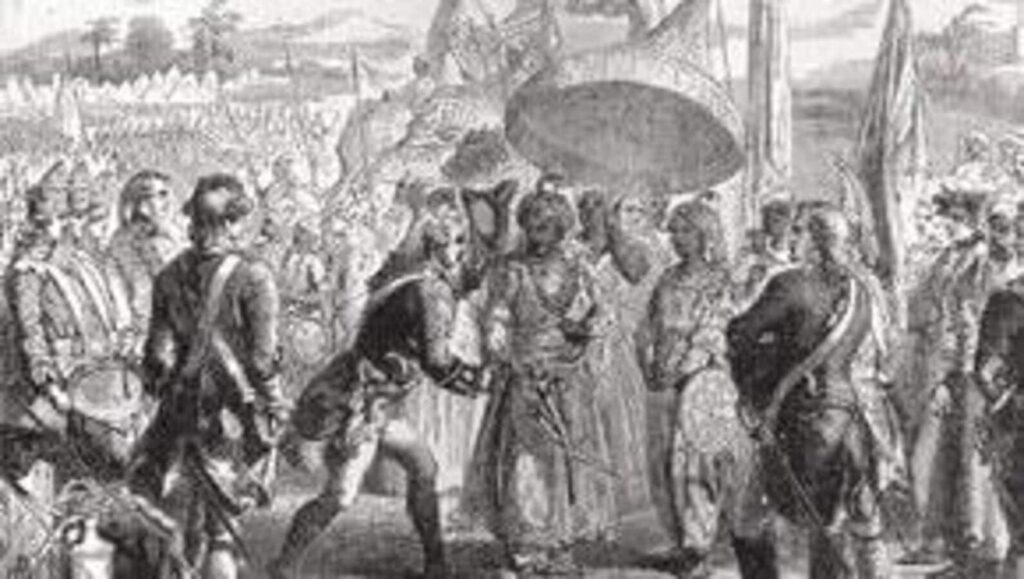Banking’s Mir Jafars who sold out India to the colonizers

One class of Indians that hasn’t copped enough of the criticism it deserves for its role in selling out the country to imperialists through the 17th and 18th centuries, is bankers of that time. Tales of their vast riches and fabulous lifestyles have often been retold. What’s less known is how they were directly responsible for the country’s gradual subjugation to successive invaders, including the French, the Dutch and finally, the British.
Take the Jagat Seths, the 18th-century merchant, banker and money lender family from Murshidabad in Bengal, which was given the honorific title ‘banker to the world’ by the Mughals for its services to the empire. Enormously rich and equally avaricious, it was the financial support of a family member, Mehtab Chand, which helped the armies of Robert Clive at a crucial time in their battle against the Nawab of Bengal, Siraj ud-Daulah, in the infamous Battle of Plassey.
What makes his actions particularly repugnant is that it was a critical stage of the battle for Hindustan. As William Dalrymple in his book The Anarchy notes, “The alliance based on reciprocity and mutual advantage of these two financial giants (East India Company and Jagat Seth), and the access these Marwari bankers gave the EIC to streams of Indian finance, would radically change the course of Indian history.”
Mir Jafar, who commanded the Nawab’s cavalry, refused to fight. Clive, and his Indian banker allies, the Jagat Seths, had secretly offered to make him the new Nawab of Bengal, if Siraj was defeated
Jagat Seth wasn’t the only one who opened the gates of India to invaders. There was a whole tribe of sellout artists who had accumulated vast sums during the Mughal era when the poverty and want of the ordinary citizenry were in sharp contrast to the wealth of the nobility and the moneylenders. Records show that a Punjabi trader named Amin Chand brokered the deal between Clive and Mir Jafar.
In the 17th century, Virji Vora was another enormously rich Gujarati businessman who financed both the Dutch East India Company and the British East India Company. Such was the bonhomie between the two that they regularly exchanged gifts. And why not? Both companies were big borrowers and paid back on time. In addition, Vora was a customer too, buying products like corals, cloves, silver ingots and tea from them.
Indeed, these merchants and bankers became such an integral part of the colonial invaders’ India plans that in the 1670s, François Martin, the first governor-general of Puducherry for the French in India, referred to them as “the brothers Boras.”
Also read: The unravelling of a financial titan: Ravi Parthasarathy and the IL&FS scandal
This role of Indian bankers is carefully documented in British records. Check out this extract from a note on Clive in the archives of Britain’s National Army Museum: “Mir Jafar, who commanded the Nawab’s cavalry, refused to fight. Clive, and his Indian banker allies, the Jagat Seths, had secretly offered to make him the new Nawab of Bengal, if Siraj was defeated.”
Economic disparity
Not that the Nawabs were blameless. They basically handed over revenue collections to these bankers as long as they got their pound of flesh. India might have accounted for 24% of global wealth, but the common people remained poor and at the mercy of the village sahukars and chettiars who charged usurious interest rates on loans. Not for nothing is the moneylender the constant villain in the literature pertaining to the period.
At one level, the role of the Jagat Seths shows the depth of financial markets in India dating back some 300 years. Financial relations had always been at the heart of political power even before the British came calling. There are accounts of how the Jhaveris, and the Haribhakti family of bankers, assumed great power in Gujarat as the Mughal empire crumbled there. However, the East India Company, and later the British government after it took direct charge of its Indian colony, turned banking almost entirely into a force multiplier for their commercial interests. Thus were born, in the 1840s, the Presidency banks – the Bank of Bengal, the Bank of Bombay and the Bank of Madras. These banks were the pillars of colonial banking, existing to serve the interests of English traders and merchants keen to dump British-made finished goods in the country.
Also read | From ‘dirty Indian’ to titan of industry: The rise of Gujarmal Modi
Over time, these banks became the foundation stones for modern banking systems in the country. Thankfully, they also marked the waning powers of the unofficial bankers who had been allies of the British Raj. When it came to making money, these men had few compunctions about selling their souls and their own country. While their souls were probably never worth much in the first place, the latter condemned the country to 200 years of subjection to the most egregious colonizer the world has ever seen.








